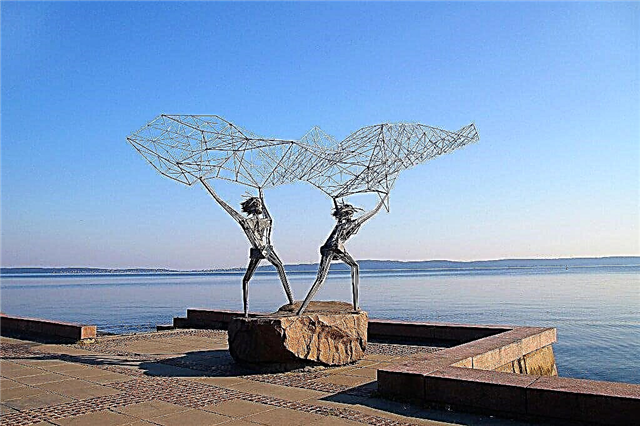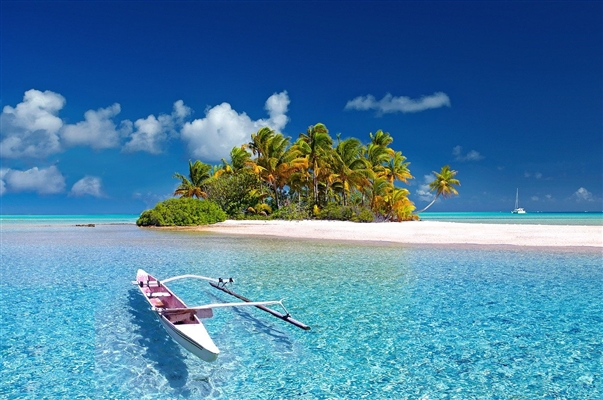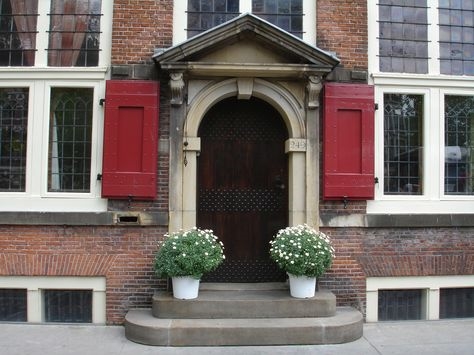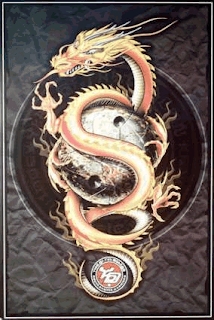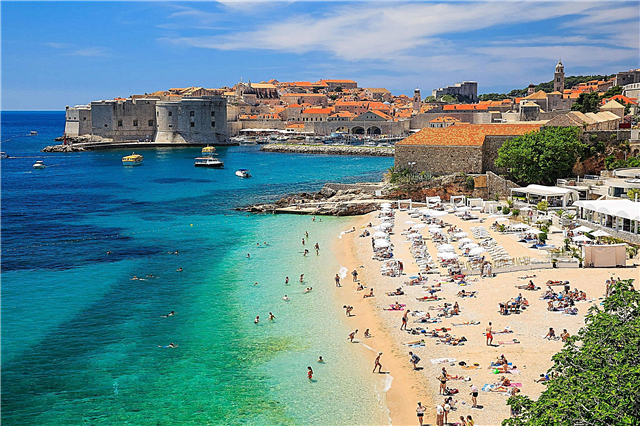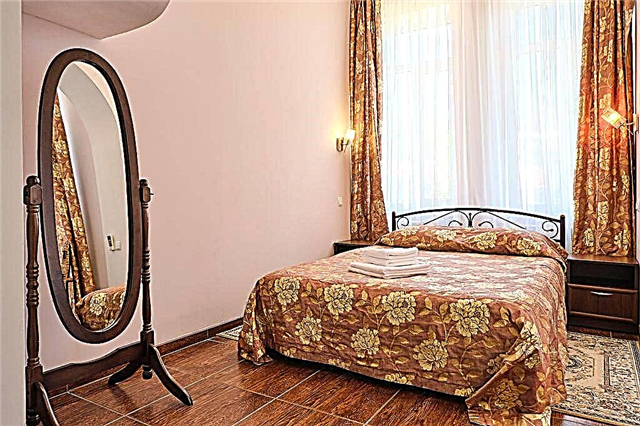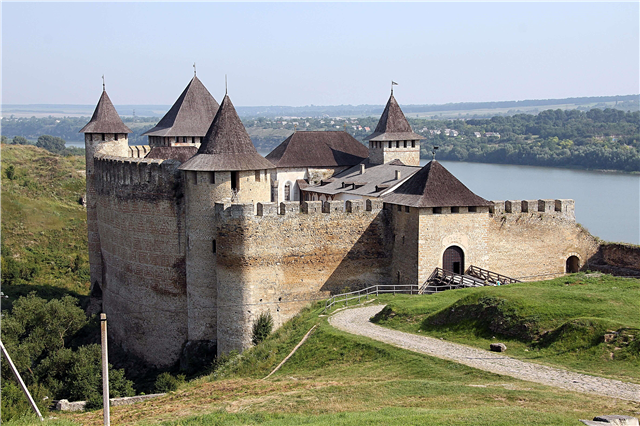Once on the territory of modern Ukraine there were more than 5,000 castles, bastions, fortresses. Most of them were built for defensive purposes - after all, internecine and interethnic wars have been fought on the territory of the country for several centuries. Not all castles survived battles, raids, sieges and fires. About 100 castles have survived to this day. Most of them are under state protection in order to prevent further destruction.
Castles of Ukraine are, first of all, powerful fortifications. Towers with loopholes, thick and high walls, castle moats are their distinctive features. Those castles that were in the possession of noble European princely families are also attractive for their architecture. Even the ruins of such castles look picturesque and attract a constant stream of tourists.
The most interesting historical castles and fortresses of Ukraine
List, photo with the names and descriptions of the main castles in the country
Kamyanets-Podolsk fortress
Founded in the days of Kievan Rus, it currently attracts many tourists. It is an object protected by UNESCO. The medieval atmosphere captures from the first steps, it is not for nothing that several scenes of the films The Old Fortress and Taras Bulba were filmed here. The fortress looks especially impressive in the dark when the backlight is turned on. In the premises of the castle, master classes are held for visitors, there are souvenir shops.

Podgoretsky castle
The magnificent Renaissance castle was built in the 17th century. The Italian-style park is as famous as the castle itself. The castle and the park form a single stylistic and architectural composition. It is believed that the castle is inhabited by a ghost of a woman, walled up alive in the wall. The walls of the castle were the scenery for scenes set in the Louvre in the film "D'Artagnan and the Three Musketeers."

Zolochiv Castle
It was built as a defensive fortress in 1634. At the end of the 17th century it became the seat of Polish kings. In addition to the bastions, the Grand Palace appeared within the walls of the castle, later the Chinese Palace - especially for the queen. Now they are open for inspection by visitors. Exhibitions in the halls tell about the history of the castle. More than 500 exhibits are exhibited - paintings, sculptures, porcelain, furniture.

Radomysl
The historical and museum complex created by the patron Olga Bogomolets. The castle was built on the basis of an old mill building. It recreates the interiors of the 17th-19th centuries, and a bell is installed on the tower. The castle includes the Museum of Home Icons, where more than 5,000 exhibits are presented. Most of them are the personal collection of Bogomolets. The castle's landscape park contains lakes and waterfalls, as well as several ancient sculptures.

Palanok
Located on a mountain 68 meters high in Transcarpathia. Presumably built in the 11th century. The name of the castle comes from the name of the oak picket fence, such fortifications made of stakes were previously called "palanqui". The total area of the fortress is 14,000 m². It consists of three parts - Upper, Middle and Lower locks. They have survived many sieges and battles. The castle is open to the public, it houses a history museum and an art gallery.

Uzhgorod castle
The opinions of historians about the year of construction are divided - it happened either in the 7th or 9th century. In any case, Uzhgorod Castle is one of the best-preserved examples of defense structures in Ukraine. The castle took its final form under the possession of the large Hungarian feudal lords Drugets. Currently, it houses a museum of local lore and a restaurant with wine tasting.

Belgorod-Dnestrovskaya fortress
Until 1944 it was called Akkerman Fortress. Built in 1440. It is one of the largest defensive fortresses in Ukraine, a monument of defensive historical architecture. Its area is about 9 hectares. Several scenes of the film "Captain Nemo" were filmed in the fortress. The garrison and civil courtyards, as well as the citadel with a dungeon, an arsenal, and a treasury have survived to this day.

Beregvar
Previously used as the residence of the Austro-German nobility. The former hunting lodge was built in the style of Romanesque and Gothic eclecticism, decorated with bas-reliefs and stained-glass windows. Rare plants and trees have been planted in the castle garden, and an ornamental pond has been dug out. Since the post-war period, the castle has housed the Karpaty sanatorium. It treats many diseases, including helping women with pregnancy pathologies.

Dubensky castle
Built in 1492 on the banks of the Ikva River. In the 17th century, it was rebuilt in the Renaissance style. A large number of underground tunnels and cellars have been laid under the castle building. They were described by N.V. Gogol in the novel Taras Bulba. Every year, within the walls of the castle, a festival is held in honor of this work. One of the basements now houses a museum of torture instruments. Guided tours, including theatrical ones, are held in the castle.

Lutsk castle
An architectural monument of the times of the Grand Duchy of Lithuania, is included in one of the "wonders of Ukraine". The first mention of the castle in chronicles dates back to 1085. Then the castle was wooden, and in 1340 the wooden parts were replaced with stone fortifications. The three towers of the castle are connected by powerful walls, inside of which there are residential buildings. Currently, the castle houses several museums - painting, bells, printing, weapons.

Olesko castle
Property of historical architecture of the XIV-XVII centuries. During the division of land between several states, it changed its owners several times. The new owners made their own changes to the appearance of the castle and its defensive ability. Also, the walls of the castle survived several fires and an earthquake. The restoration of the castle was started in the last century. The converted building displays art and antiques.

Ostrog castle
It was the ancestral nest of the Ostrozhskys - the Western Russian princely family. In 1832 the castle was badly damaged by fire and was never rebuilt. However, the ruins of the castle are often visited by tourists. From the entire castle, the Epiphany Cathedral, the Round Tower, the bell tower and several fragments of the walls have survived. The oldest surviving part is the three-tiered Murovannaya Tower, built in the 14th century from sandstone and stone.

Chinadievsky castle
In the Middle Ages, it was called St. Miklos. Located in the valley of the Latoritsa River, near the Russian Gate Pass. Built in the 15th century, survived military operations, was a prison during the Second World War, a village council under Soviet rule. In 2001, the artist Iosif Bartosz began the reconstruction of the castle. He restored the first floor, restored medieval interiors. Today, these premises host international exhibitions.

Medzhybizh castle
The fortress-castle was built in the form of a triangle, where corner towers protrude from the powerful walls. The walls are 4 meters thick and 17 meters high. For some time, the fortress was under the rule of Turkish troops, so you can see eastern features in the style of the castle architecture. For tourists, there is a museum of local lore located in the castle; you can also see the church, barracks and the tower of the knights.

Sharovsky castle
A neo-gothic building on a hilltop on the banks of the Merchik River. The decoration of the premises of the palace shocked with luxury - marble fireplaces, parquet, stucco, wall paintings. During the Soviet era, a sanatorium was placed in the castle. For many decades, the castle has not been repaired or restored. In 2009, the building fell into decay. The allocated funds are not enough for the complete restoration of the entire territory and the park zone.

Ternopil castle
Erected in 1548 to protect against the Crimean Tatar raids. In 1975, during the siege, he was burned.It stood in ruins until the 18th century, after restoration it was used for balls and festive events. In the 19th century, all the fortifications of the castle were demolished; it acquired the appearance of a classic Russian palace. The castle suffered another burning in 1917. After restoration in 1931, it acquired its modern look.

Kiev fortress
The largest earthen fortress in Europe. It was part of the line of the West Russian fortification. The construction of the fortress began in 1706. The main part is the Novo-Pechersk Fortress, built by Emperor Nicholas I in 1830-1850. At the end of the 19th century, after losing its strategic importance, it was used for the needs of the army. Currently, the Museum of the History of Kiev and the Museum of the History of the Fortress function within the walls of the fortress.

Zbarazh castle
Located on a mountain in the center of the city of Zbarazh. In the courtyard of the castle there is a two-storey Renaissance palace. The castle project is made in the image of Italian fortresses. Within the walls of the castle in 1649, a treaty was signed after the uprising of the Zaporozhye Cossacks. These events are described in detail in the popular novel "With Fire and Sword". It is currently under restoration after being abandoned during the Soviet era.

Zhovkva Castle
A magnificent example of Renaissance architecture preserved in Ukraine. The castle was founded in 1594 from brick and stone. The modern look of the castle is different from the original one. Arches, columns, sculptures were destroyed. The castle itself sank into the ground for several meters. However, connoisseurs of architectural art often visit this place anyway. The surviving and partially restored premises of the castle house a museum and several private offices.

High castle in Lviv
A medieval castle in the historical part of the city - on a mountain in the park of the same name. It is the most visited place in the city. During the siege by the Cossacks in 1648, it was taken by storm, later the Turkish troops occupied it practically without a fight. The castle suffered the most from the Swedish troops. After severe destruction, it was no longer of strategic importance. Now only a fragment of the wall with loopholes remains of the castle.

Svirzh Castle
The construction of the defensive structure began in the 15th century. Not all buildings of the castle have survived to this day. Only the outer walls remained from the original appearance. The interior of the three-story castle was rebuilt. In the courtyard there is a well, now abandoned. There is also a preserved Renaissance church, founded in the 15th century. Several scenes of the film "D'artanyan and the Three Musketeers" were filmed in the premises of the castle.

Khotyn fortress
The fortress was built on the site of a fortified settlement of the Tivertsy tribe. The stone walls of the fortress began to be erected around the 1250s on the side of the mountain. The Khotyn fortress was repeatedly subjected to assaults and sieges. For example, in 1621, Turkish troops of 250,000 people stormed the fortress 6 times, but could not defeat it. The fortress is often visited by tourists. Many films were shot in it.

Vasilievka (Popov Castle)
The history of the estate and castle of the noble family of the Popovs began in the 18th century. The buildings are made in different styles - baroque, romanesque, neo-gothic. A four-story manor house with towers, ballrooms, wine cellars, an art gallery - almost everything was destroyed during the Soviet era. The final destruction of the castle took place during the war years. The preserved premises are now occupied by a museum-reserve.

Koretsky castle
Currently, it is the ruins of the ruined residence of the Koretsky princes. Several fragments remained from the defensive structures of the 15th-17th centuries - a gate tower and the remains of buildings. The viaduct leading across the moat to the fortress was renovated in 2005. The gate tower is located on the coat of arms of the city of Korets, where the remains of the castle are located. The ruins of the castle are a landmark of Baroque architecture.

Olytsky castle
The castle was founded in the 16th century. For several centuries the castle belonged to a wealthy family of the Lithuanian principality of the Radziwills. The castle has survived several invasions. The last restoration of the castle after the destruction during the First World War at personal expense was carried out by a representative of the Radziwill family. During the years of Soviet power, the castle building was taken away as a premises for a psychiatric hospital, which is still there today.

Skalat Castle
Built in 1630. During the construction, a mixture of different styles of architecture was used - Renaissance, Baroque. Currently, the castle is part of the structure of the national reserve "Castles of Ternopil". The surviving towers with loopholes, several fragments of walls, underground galleries, and a moat around the castle are available for tourists to visit and inspect. The castle is being actively restored; it is planned to place a large museum object in it.

Chervonograd castle
The ruins of the castle are located near the town of Zalishchyky. At this place, starting from the 9th century, several fortresses were erected, which were subsequently destroyed or burned during raids. The castle, the remains of which can be viewed now, was built in the 17th century. Counts and princes lived in it until 1939. With the advent of Soviet power, the buildings of the castle began to be dismantled for building materials. Two Gothic castle towers remained intact.

Terebovlya castle
The castle was founded in the XIV century by King Kazemir III. It was burnt in 1687 during the attack of the Tatars and has not been restored since then. The ruins of the castle are fragments of the lower tiers of the walls, part of the towers, gate arches and foundations of residential and utility buildings. There is no tourist infrastructure around the castle, poor transport accessibility. Mainly connoisseurs of history and ancient architecture come to visit the ruins of the castle.

Kremenets castle
It is an architectural monument. In the past, it was considered an impregnable fortress that cannot be conquered. However, the Cossacks were able to capture the castle in 1648. After that, the castle lost its military and strategic importance and was abandoned. To date, the remains of the castle are under state protection - a gate tower of two tiers, a Gothic entrance arch, part of the walls 2 meters thick and 12 meters high.

Nevitsky castle
The ruins of an ancient castle are located on a high rocky ledge. A steep serpentine road leads to them. The castle was built in the XIII century. For several centuries, the castle was rebuilt, improving its defensive ability. In 1644, the troops of the governor from Transylvania destroyed the castle so badly that no one began to restore it. Local residents, according to the legends of an old legend, sometimes call the building the Castle of the Nasty Maiden.



